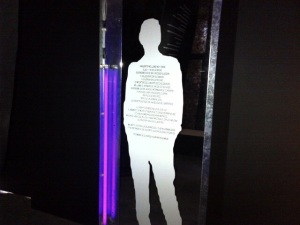During the “recess” from October 9th and Nov. 3rd. and throughout the 43rd session that began on Nov. 3, the government of Colombia and the FARC-EP parties continued to work on parallel tracks on a number of issues on the peace agenda–namely, victims and the end of the conflict. Most significantly, on October 17th, the parties issued a landmark agreement that will form part of their comprehensive system to satisfy the victims’ rights to truth, justice, reparations and guarantees of non-repetition. This agreement focused on the issue of the disappeared. Father Pacho de Roux, S.J. called the accord “a qualitative leap in the Havana process,” inspired by the victim survivors who have driven home for the negotiators and the public not only the barbarity of the war, but a sense of “grandeur and spiritual generosity and the capacity to rebuild ourselves.” In a powerful piece in El Tiempo, de Roux described the practice of disappearances as “the most sinister abyss of our deteriorated war,” explaining that “the dead live within us and they give strength to our determination for peace, but the disappeared, in their empty tombs, are the most unbearable wound from our conflict.” (Read his piece here.)

Although there are considerable discrepancies in the statistics on disappearances–an issue that is addressed in the agreement–the numbers are in all cases significant. At a Nov. 3 Congressional hearing in Bogota, the Attorney General’s Office put the total figure at a staggering 117,646. The National Registry sets the figure at 106,401–of which 22,350 were victims of forced disappearances. The Single Register of Victims (Registro Unico de Víctimas) of the government’s Victims’ Unit has documented 45,515 registered disappearances as a result of the armed conflict. (See “Tras la ruta de los 117.646 desaparecidos en Colombia.”) The Historical Memory Center, which puts the number of disappeared at has produced four studies of disappearance in Colombia that are available online and may be found here.)
Colombia has more disappeared than all the Southern Cone dictatorships combined. SIRDEC (Sistema de Información Red de Desaparecidos y Cadáveres) notes that Colombia has 69,565 persons reported as disappeared, of which 20,944 have been presumed to have been forcibly disappeared. According to Basta Ya, of the Centro Nacional de Memoria Histórica, between 1985 y el 2012, there were 25,007 people who were made to disappear as part of the armed conflict. (See more here.)
The parties have already begun to put into practice some of the measures agreed to on Oct. 17th–in apparent but welcome contradiction to the parties’ original rule that “nothing is agreed until everything is agreed.” The Oct.17th agreement on disappearances called for some immediate measures. In particular, it committed the guerrillas to providing information that would help locate those who died and were buried in the jungle, and committed the government to stepping up the process of identifying and returning the bodies of guerrillas who died in combat and are buried in cemeteries in anonymity. Three hundred fifteen (315) bodies have already been identified in La Macarena, Vista Hermosa, Meta, and Caquetá. (See more here.)
Movement is also being seen øn the longer-term agenda mandated by the Oct. 17th agreement. On Oct. 28, Sergio Jaramillo, the High Commissioner for Peace and one of the government’s lead negotiators, met with the existing National Commission to Search for Disappeared Persons (Comisión Nacional de Búsqueda de Personas Desaparecidas)–which includes the directors of the Offices of the Attorney General, the Institute for Legal Medicine, the Public Defender, the Comptroller General, the Defense Ministry and victims’ associations. (For more on the meeting, click here.)
The Oct. 17 agreement on disappearances mandated the Commission to develop within the next four months guidelines to facilitate the search for, and identification and return of the remains of those who have disappeared during the conflict to their family members.
The Commission has stepped up to the plate. It created an inter-agency working group to assist in fulfilling its charge. It will review and compare existing data bases on the disappeared; seek ways to improve procedures for finding, identifying and exhuming remains; and coordinate its work with victims’ groups and the International Committee of the Red Cross (ICRC). It will also hold four regional forums and one national forum to collect proposals from academics, victims, and human rights organizations that will help inform their recommendations to the negotiators. Such forums have proven invaluable in earlier efforts to engage civil society in developing and sharing their proposals in relation to the particular items of the peace agenda.
Both sides see the benefit of showing that nearly three years of conversations are producing real change in the regions most affected by conflict violence. Addressing the problem of the disappeared (like the de-mining initiatives being undertaken by the Army and the FARC-EP and other measures to de-escalate the conflict) has broad popular support and contributes to building credibility for the peace process as well as reducing the suffering that has been one of the most painful legacies of war.